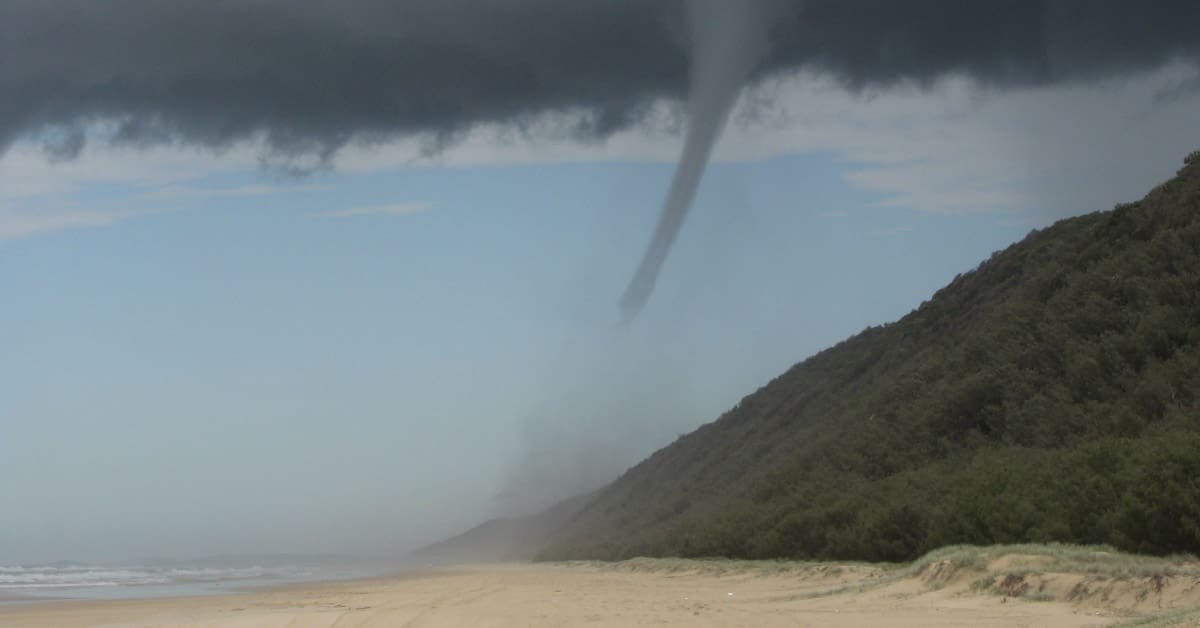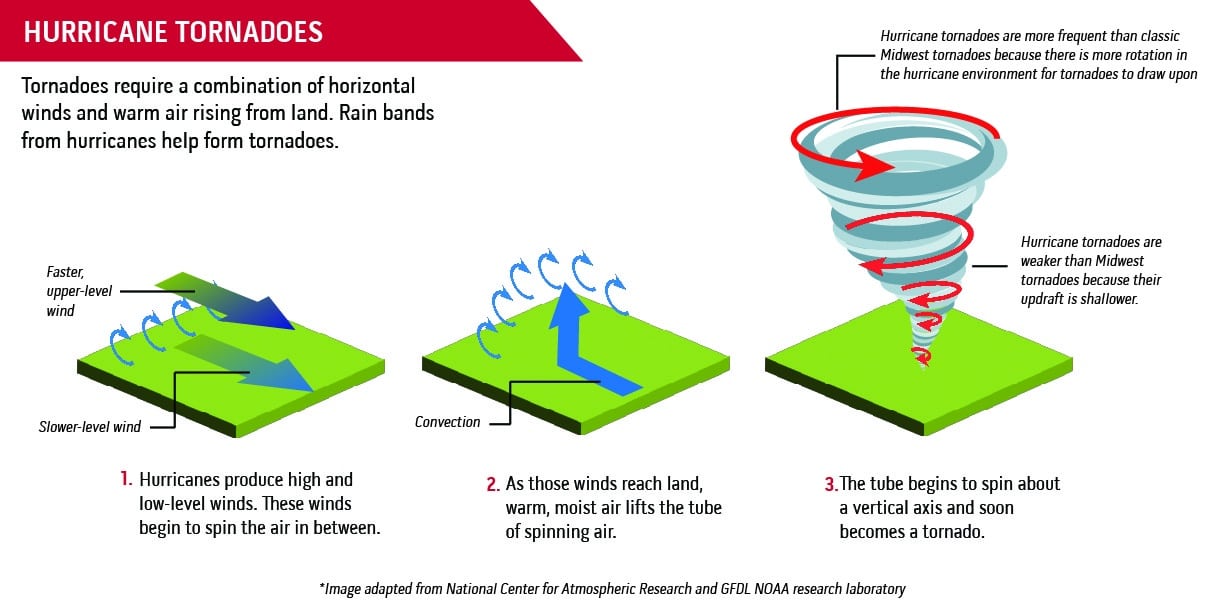CATEGORIES:
When Hurricanes Cause Tornadoes
November 10, 2022

Most of the time, when we think of tornadoes, we think of deafening thunder, crashing hailstones, and, sometimes, green skies. (These are supercell tornadoes.)
But, with a certain type of tornado – those caused by hurricanes – none of that is the case.
Hurricanes and tornadoes have a complex relationship. Some hurricanes produce few or no tornadoes, while others are prolific tornado producers. For example, Hurricane Ivan in 2004 produced 120 tornadoes from the Gulf to the Middle Atlantic coasts.
Tornadoes caused by hurricanes can and do occur well away from the coast, in regions not associated with hurricanes, such as the Ozarks. The illustration below shows how hurricanes, which are known for storm surges, flooding, and wind, can cause tornadoes. In 2005, Hurricane Katrina, in Louisiana, caused tornadoes as far away as Pennsylvania, a thousand miles away from where the storm made landfall.

While hurricane-spawned tornadoes do not reach the extraordinary level of violence as the supercell-type tornado referred to at the beginning of this article, they are still dangerous. They can and do cause deaths.
The good news is that when tornadoes from hurricanes are likely, a tornado watch is issued, just as it is when more “conventional” tornadoes occur. When a watch is in effect, we strongly recommend you monitor the weather in case a tornado warning is issued. The tornado warning is the signal to take shelter.
Hurricanes are a multi-faceted danger. Fortunately, modern meteorology can provide forecasts and warnings of wind, rain/flooding, storm surges, and tornadoes. Please follow the advice of weather scientists and local officials when these storms threaten.
The professionals at Survive-a-Storm can help you decide which tornado shelter is most appropriate to meet your needs, no matter where you live. With above ground storm shelters and underground storm shelters available, we’re confident that we can provide the best solution for you.




